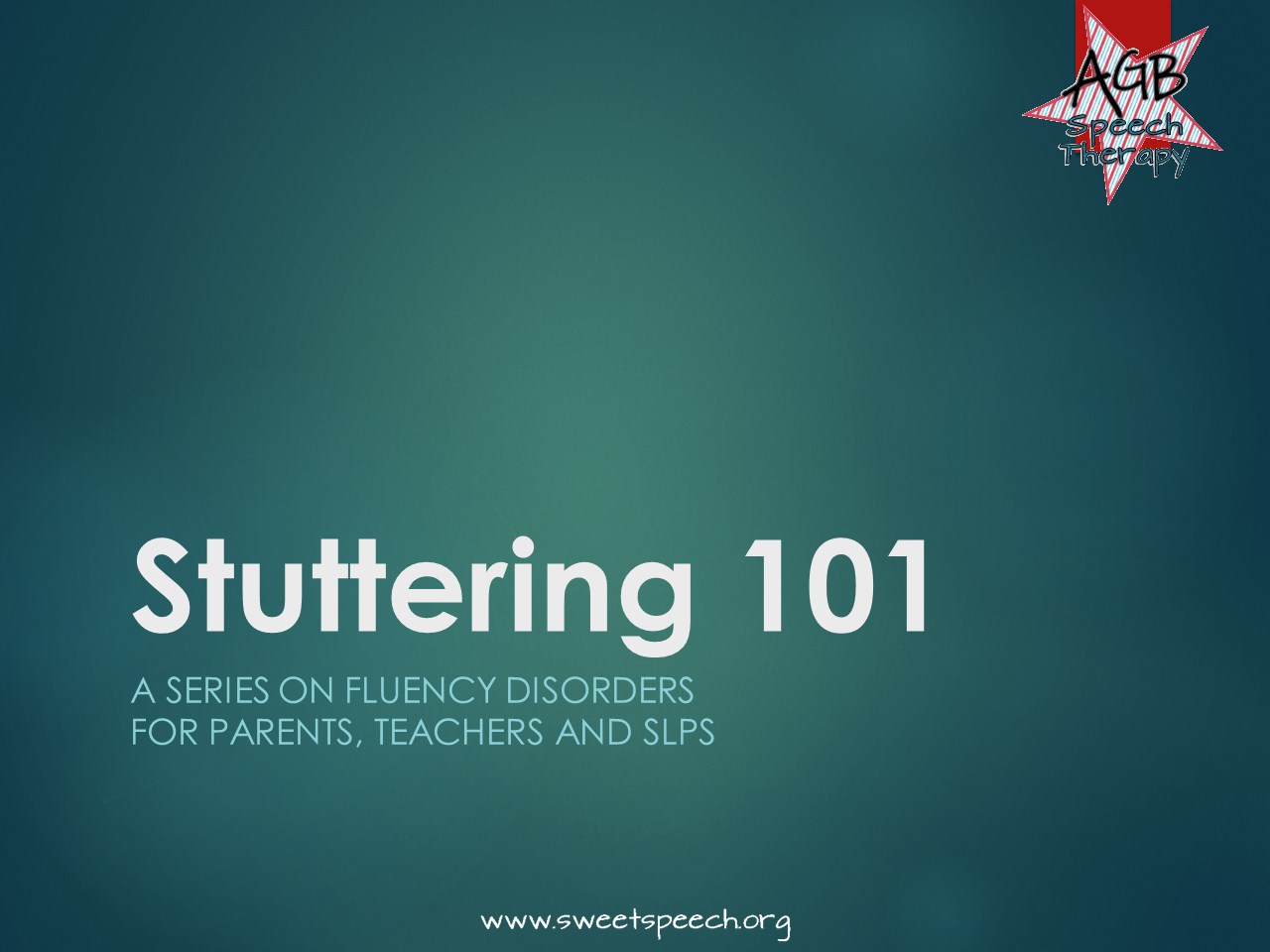Welcome back! Today we’ll be talking about the red flags that could indicate a child who has begun to stutter may continue to do so. This is the second post in Stuttering 101: A Series on Fluency Disorders for Parents, Teachers and SLPs.
 If you haven’t already done so, please take a moment to read the first post in this series: What is stuttering?
If you haven’t already done so, please take a moment to read the first post in this series: What is stuttering?

It is important to take a “whole child” maybe even a “whole family” approach to fluency assessment from the beginning. A child is not just his disfluency. A child has feelings and emotions, a personality, a temperament. A child has worries and hopes. A family has a dynamic, a style and a method for dealing with all things that occur within their home. Taking careful note of these factors may help to make decisions regarding diagnosis, treatment and prognosis.
To start the conversation about red flags, we have to divide children into age groups because our research shows us different things for preschool students (aged 2-5) and school-aged students (aged 5-16).
Preschool Students:
Many preschoolers exhibit some stuttering-like disfluencies as they are learning to talk. These repetitions are typically attributed to the child’s experimentation with the use of language, exploding vocabulary, and growing fine motor skills. Other things that can cause disruptions in speech fluency are big changes in the child’s life. New siblings, moving homes, changing schools, changing dynamics of a family such as death or divorce, can manifest in the form of disfluent speech.
What we know about the younger children is that around 75% of preschool children who stutter will develop typical speech without intervention (Yairi & Ambrose, 1999). I have often stated this fact to parents with happiness and hope for their child, but many will take in the information and ask me, “What if my child is in the 25%?”
My advice to preschool parents is this: Taking into consideration the whole child/family, review the red flags chart and determine if your child could be described by these risk factors. If the answer is no, we’ll implement some simple, indirect treatment approaches and monitor the child. Then we’ll reconsider his/her needs at a later point in time. If the answer is yes, we’ll begin treatment.
School-Aged Students:
For school aged students, the “whole child/family” information should still be considered, but age of onset and duration of stuttering are key factors. Children who begin stuttering after age 3.5 are more likely to persist in stuttering (Yairi & Ambrose, 2005). For school-aged students, my advice is to begin treatment.
Red Flags for Stuttering Persistence
-
Family history of persistent stuttering
- Almost half of all children who stutter have a family member who stutters. If the family member persisted in stuttering, it is more likely that your child is truly stuttering and could benefit from treatment.
-
Age of onset before 3.5 years
- Children who begin stuttering after age 3.5 are more likely to persist in stuttering (Yairi & Ambrose, 2005).
-
Stuttering for more than 6 months
- According to the Stuttering Foundation, 75-80% of children who begin stuttering start to show improvement within 12 to 24 months without speech therapy. If your child has been stuttering longer than 6 months, or if the stuttering has worsened, he/she may be less likely to outgrow it on his/her own.
- This time frame is debated among speech therapists. I tend to take the more aggressive approach rather than a wait and see stance, especially if the child is aware of the stuttering or is beginning to experience negative reactions from him/herself or others.
-
Male gender
- It is estimated that boys are 3-4 times more likely to stutter than girls.
-
Speech sound production difficulties/concerns
- Research is still being conducted in this area. Some children who stutter also present with speech sound errors. (Nippold, 2001; Wolk et al., 1993)
-
Language skills – advanced, disordered, or delayed
- There was once the misunderstanding that children who stutter have lower language skills than children who do not stutter. Stuttering research is proving this is not the case. In fact, most children who stutter have language skills within average ranges.
- Advanced language skills appear to be even more of a risk factor for children whose stuttering persists (Yairi & Ambrose, 2005)
If your child exemplifies any of the following red flags, you may want to contact a speech – language pathologist in your area. You can use the American Speech-Language and Hearing Association (ASHA) ProFind tool to locate a professional near you.
Now that we know what stuttering is and are knowledgeable about the factors that may indicate persistence of stuttering, it’s time to discuss treatment options.

References:
Nippold, M.A., (2001) Phonological disorders and stuttering in children: What is the frequency of co-occurrence? Clinical Linguistics and Phonetics, 15, 219-228.
Wolk, L., Edwards, M.L., & Conture, E.G., (1993). Coexistence of stuttering and disordered phonology in young children. Journal of Speech and Hearing Research, 36, 906-917.
Yairi E. & Ambrose N. (1999). Early childhood stuttering I: Persistency and recovery rates. Journal of Speech and Hearing Research. 42, 1097-112.
Yairi, E. & Ambrose, N. (2005). Early Childhood Stuttering: For Clinicians by Clinicians, Pro-Ed, Austin, TX.


1 Comment